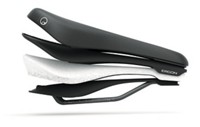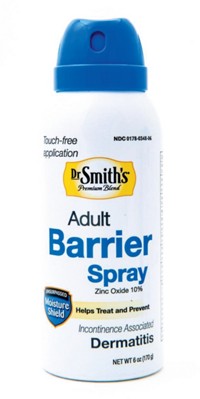Advertisement
Grab your lab coat. Let's get started
Welcome!
Welcome!
Create an account below to get 6 C&EN articles per month, receive newsletters and more - all free.
It seems this is your first time logging in online. Please enter the following information to continue.
As an ACS member you automatically get access to this site. All we need is few more details to create your reading experience.
Not you? Sign in with a different account.
Not you? Sign in with a different account.
ERROR 1
ERROR 1
ERROR 2
ERROR 2
ERROR 2
ERROR 2
ERROR 2
Password and Confirm password must match.
If you have an ACS member number, please enter it here so we can link this account to your membership. (optional)
ERROR 2
ACS values your privacy. By submitting your information, you are gaining access to C&EN and subscribing to our weekly newsletter. We use the information you provide to make your reading experience better, and we will never sell your data to third party members.
Materials
What’s that Stuff
What's that stuff? Fix-A-flat
A combination of liquefied propellant and tire sealant helps stranded motorists
by David Pittman
October 11, 2010
| A version of this story appeared in
Volume 88, Issue 41
It’s one of a driver’s worst nightmares. You hear or feel a pop under your car while driving down the highway. You stop, get out, and inspect, only to see a tire is flat. Great. What now?
If you aren’t in a position to change the tire, or never learned how, there’s a solution: spraying an inflator and sealant into the tire from an aerosol can. The handy product is best known under the brand name Fix-A-Flat.
For all its instant gratification, this product is remarkably simple. It uses a liquefied propellant to inflate the tire while a latex emulsion foams to plug the leak.
Although a gas at room temperature, the propellant becomes a liquid when compressed into the can, explains Jiafu Fang, senior product development scientist for Shell Global Solutions, which has owned the Fix-A-Flat brand for close to a decade. When released from the can, the propellant evaporates. The propellant in a 16-oz can is able to expand and fill the whole tire. Fang says gases such as nitrogen and oxygen don’t compress as easily to fit in a convenient 16-oz can.
Currently, flat-fix product makers commonly use the nonflammable refrigerant hydrofluorocarbon (HFC)-134a, whose chemical name is 1,1,1-trifluoroethane, as a propellant. It’s also typically used in car air-conditioning units.
The propellant carries with it a number of materials. The key ingredient is a polymer latex, a milky substance similar to the latex in paint. When fired out of the can, the latex foams and fills the tire, plugging holes wherever they may be. Along with other materials in the mixture, a water-based carrier holds corrosion inhibitors, which prevent rust formation and other damage to the wheel.
“The foam is useful because you want to get as much of the sealing material onto the tire as you can, as quickly as you can,” says Collin Dilley, product development manager for Tire Jack, the Prestone competitor to Fix-A-Flat. “The foam has to be able to foam up and cover all the areas inside the tire,” he explains.
Consumers can find similar inflators and sealants specially made for bicycle, motorcycle, and heavy-duty tires. “There are various types of sealer out there, and the formula will depend on what kind of tire you want to inflate,” Dilley says.
Fix-A-Flat and similar products have sold under different names since at least the 1980s. Pennzoil acquired the Fix-A-Flat brand when it bought Durham, N.C.-based Snap Automotive Products in 1997. Shell bought Pennzoil in 2002, but it put Fix-A-Flat and other car care businesses up for sale earlier this year.
While it has owned the brand, Shell has made some changes. “When we acquired the product, we completely changed the formulation,” Fang says of Fix-A-Flat. “We tried to improve performance and safety.”
For example, Snap initially used dimethyl ether as its propellant, but the organic compound raised safety concerns because of its high flammability, Fang says. Other flat-fix product makers previously used propellants such as propane and butane, which are similarly flammable. Shell and other companies switched to HFC-134a to reduce such safety concerns.
Pending environmental regulations on climate-changing chemicals will soon force scientists developing tire inflators and sealants to further alter their products. European countries are outlawing HFC-134a, and Shell expects that the U.S. will follow. Companies must find a replacement chemical with a lower global-warming potential (GWP).
CO2, the iconic global-warming gas, has a GWP of 1. Whatever comes next in the Fix-A-Flat pipeline must have a GWP below 150. HFC-134a’s GWP is 1,300.
Fang declines to describe Fix-A-Flat’s options for replacement propellants in detail, but he says trans-1,3,3,3-tetrafluoropropene is a leading candidate. The hydrofluoroolefin has a relatively low GWP of 6 and, like HFC-134a, is nonflammable.
With an environmentally friendly alternative to HFC-134a soon to hit the market, motorists in need of these mechanics-in-a-can will still have an easy fix—motorists including Fang’s own family. Recently, the car of the scientist’s son spawned two flat tires at once. Luckily for him—but perhaps not surprisingly—he was carrying some cans of Fix-A-Flat and was able to drive away.





Join the conversation
Contact the reporter
Submit a Letter to the Editor for publication
Engage with us on Twitter